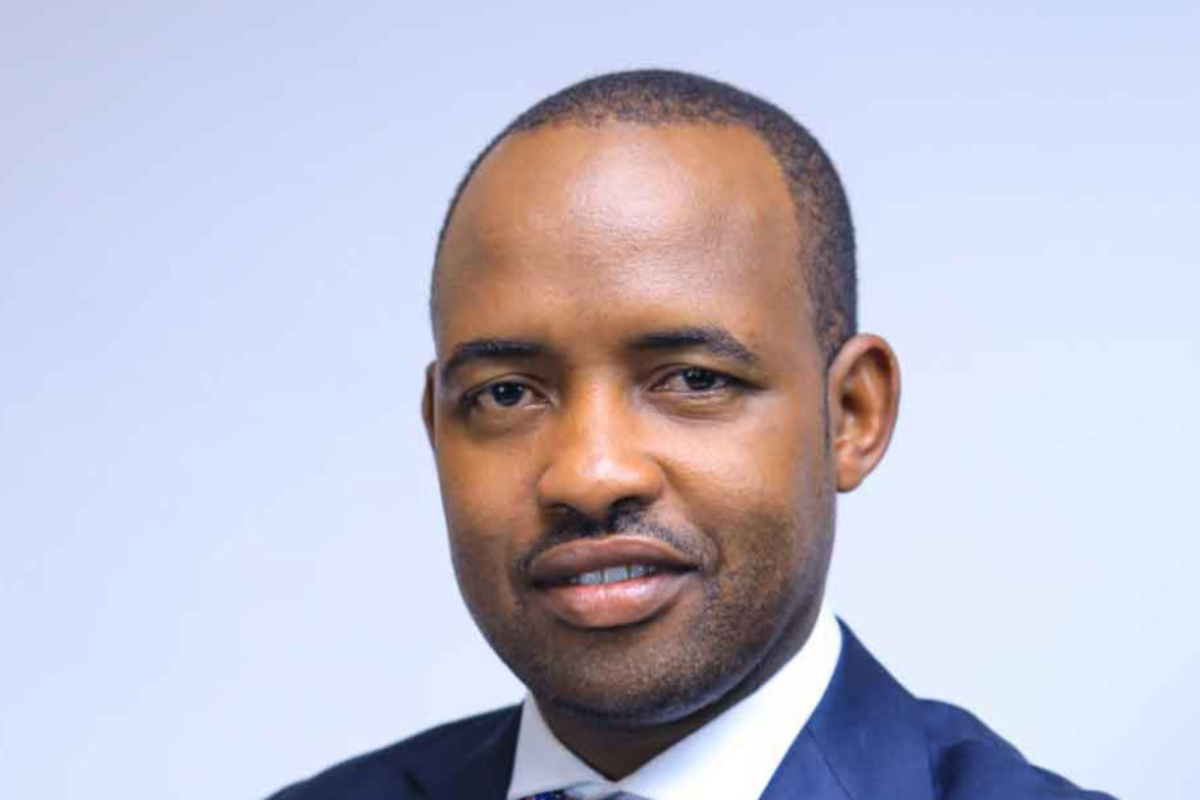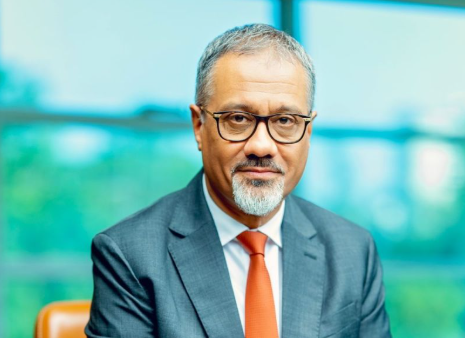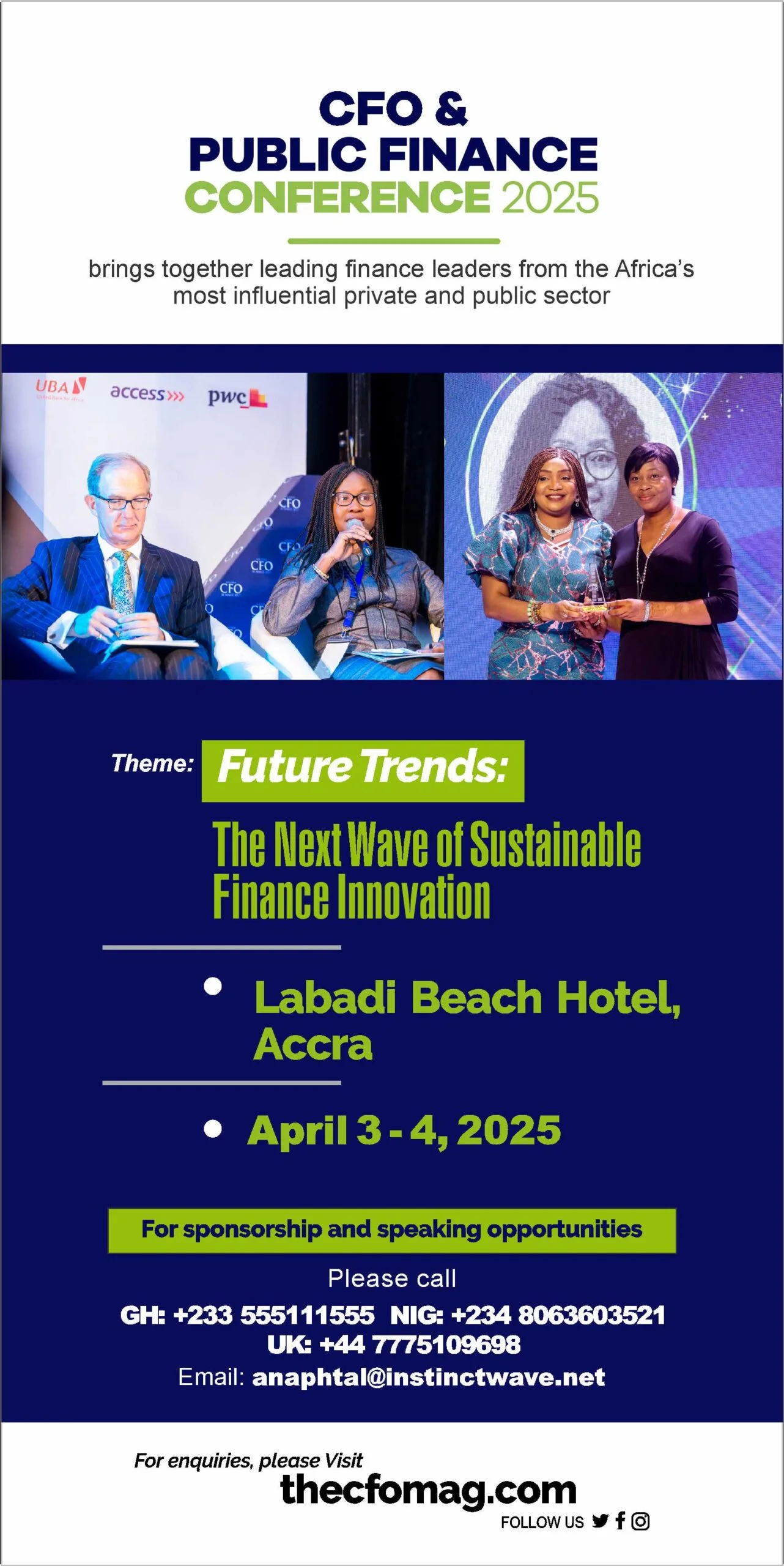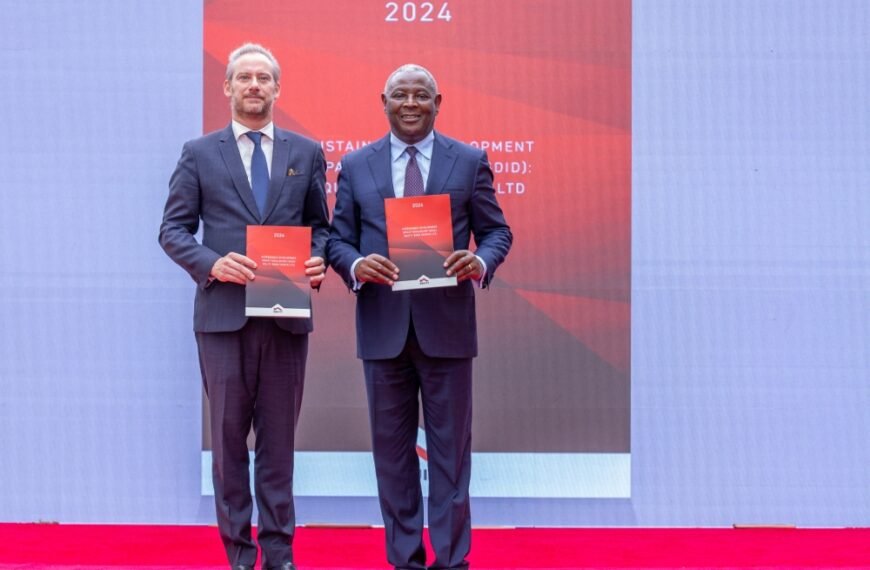
“Do the right thing as marketers to build trust”- Ms. Dolapo (Dolly) Otegbayi, Specialised Nutrition Director, FrieslandCampina Wamco Nigeria
Malnutrition has been a leading contributor to child death globally, particularly in Sub – Saharan Africa over the decades, though significant gains have been made in improving nutrition in the past decades, several nutrition targets set by global and national bodies have not been met.
In 2015, the world agreed to eliminate all forms of malnutrition by 2030 under the United nations sustainable development goals, to ensure this goal is achieved the united nations have adopted the first-ever UN Decade of Action on Nutrition, from 2016-2025. Eliminating malnutrition by 2030 would require a profound change in the food and agriculture system with contribution from different stakeholders.
One of such is FrieslandCampina WAMCO Nigeria, the county’s foremost dairy company and market leader; providers of dairy products through its brands, Peak, Three Crows and Friso, which for over sixty (60) years has operated in the West African business country addressing global challenges including, nutrient scarcity, sustainability and support for farmers.
In this Interview with MarketingWorld Ms Dolapo (Dolly) Otegbayi a Specialised Nutrition Director at FrieslandCampina WAMCO Nigeria and current MarketingWorld Award Woman of the Year and listed on Africa Top 50 Marketing Leaders, shares her views on the essence of good nutrition, her company’s projections towards the elimination of malnutrition, provision of utmost customer satisfaction to its consumers and other sundry issues. Excerpts…
What are your views on child malnutrition in Sub-Saharan Africa?
Thank you for the question. As a Business Leader with keen interest in Nutrition, it’s extremely important to follow topical trends on the subject matter. When children enjoy good nutrition, they survive to contribute their quota to their country and global progress. They are able to develop positively; with malnutrition, children are denied of a bright future! It keeps them in a state of “vulnerability now and in the future”.
Sub-Saharan Africa has one of the highest levels of child malnutrition globally; and to express views on the topic, it is critical to not only explore how malnutrition is distributed within sub-Saharan regions, but to understand the key drivers of the “pandemic”, identify the worst affected countries and come up with immediate intervention to address it! According to WHO, UNICEF, the double burden of malnutrition is categorized by the co-occurrence of the following indicators present in an individual – in this case – children 1. Undernutrition, 2. Overweight and 3. Obesity. These three are either exclusive or inclusive of other diet-related noncommunicable diseases. Across sub-Saharan countries, many children suffer from more than one form of malnutrition – such as stunting, and overweight or stunting and wasting.
Sadly, in spite of many countries blessed with natural resources, poor nutrition is the single driver of closely 5 out of 10 deaths in children under five, while floating and middle class income dominated countries are experiencing an increase in childhood overweight and obesity – at a growth rate of 30% compared to wealthier countries and economies. Further deep dive suggests that the double burden of malnutrition is driven by deficiency of one or several vitamins and minerals in children, or offspring’s who missed key developmental milestones, and or when some conditions are passed from mother to children e.g. A family with high incidence of being overweight or anaemic. Unfortunately, there’s high incidence in the prevalence of both undernutrition and overweight in the same community, country and regional territories.
I’d like to encourage stakeholders to continue to focus on the core! The approach to tackling and addressing malnutrition in sub-Saharan Africa must be integrated. The onus is for Africa to “take her life in her hands”! On a regional and country, private and public levels engagement and discourse should continue on:
- Addressing the vicious cycle of poverty
- Promote and drive quality education amongst women on benefits of observing healthy practices like breastfeeding and balanced diet.
African countries to combine forces to address hostile climatic conditions for example – farming conditions, deforestation, droughts, flood etc.
Government in conjunction with relevant public institutions should address corruption in the value chain, promote government’s interest and investment in key sectors to help address the pandemic.
Nigeria has the second highest burden of stunted children in the world, with a national prevalence rate of 32 percent of children under five, what are the changes you believe will best address this deficiency?
To check, manage and possibly ‘eradicate’ malnutrition in Nigeria, Government in collaboration with local and international donors have implemented national, regional and community specific programmes and interventions. For examples, to support to treat and address Severe Acute Malnutrition (SAM), there’s an inpatient and out-patient therapeutic feeding, programme under the auspices of UNICEF – CMAM – i.e. Community Management of Acute Malnutrition.
There’s a call and compliance to safeguard optimal nutrition in the first 1,000 Days of life, and I’d like to add mothers as well. There is strong collaboration with Government, NGOs, Private Companies etc. to encourage, guard and support early initiation of breastfeeding within thirty minutes of delivery. Mothers are encouraged to practice exclusive breastfeeding for the first six months and to continue this into the second year of life with the introduction of nutritionally adequate complementary foods at six months of age.
Also, many private and public health centers organize and hold several antenatal and postnatal women sessions to drive awareness through dissemination of education via nutrition package – which comprises demonstrations on preparing meals, how to take advantage of classes of foods that give balanced diet to support malnourished or at-risk children and how to monitor children’s developmental milestones.
Make affordable food available and accessible for Nigerians and children in particular. FrieslandCampina WAMCO has participated in many state school feeding programmes, making Milk available for the children. This initiative focuses on primary schools to support Government to improve nutritional status of school-age children.
As I said earlier, a lot is done already, and as the saying goes…. We can do more. All stakeholders should and will continue to discuss and follow developments in the area of protection, promotion and advocacy for food safety and food security for millions of Nigerian Children.
Peak 456 has been well accepted in the Nigeria market; will you say you’ve been able to achieve the nutritional goal you set out to achieve with this product?
At FrieslandCampina WAMCO, we are guided by our purpose; it provides direction for the choices we make. We are on a mission to Nourish ALL Nigerian Children with Quality Dairy Nutrition – Whoever, Whenever and Wherever. We will continue to drive win-win partnership and added value together with our value chain partners; we are committed to fostering sustainable child development in Nigeria. As a Brand and proposition, I’ll admit Peak Growing Up Milk has been able to establish itself as a purposeful brand, passionate about nutrition for children. Our Purpose, our plan is to continue to lead & steer the discussion on good nutrition during the early years of life as our contribution to safeguarding the health of our young population for years to come. Studies have shown that what children eat and drink during their early years can influence and determine how they grow and their overall wellbeing for many years to come. Over-all eating habits are formed early in life, hence, it’s important parents give their children and wards ‘age – appropriate’ nutritious food. Children need a healthy balanced diet containing foods from each food group so they get a wide range of nutrients to help them stay healthy. With Peak 456, we inspires ourselves, our consumers, customers, stakeholders to make affordable age appropriate milk available for parents, anywhere and anytime!
Could you share with us your most memorable brand campaign and why?
I’ve been around a long time and have had the opportunity to work with the best in the industry. Rather than focusing on the memorability of the campaigns, I’d like to focus on and talk about campaigns I led that met set marketing objectives. I recall with fondness Three Crowns Milk relaunch campaign 2005; the task was to drive competitive conversion or switching— get Evaporated milk users to switch to Three Crowns milk brand. The success of the campaign was the Team’s ability to provide explanation to target consumers on “why Three Crowns is good for the body”. And that campaign set the tone and direction for the future strategic thrust for the Brand.
Peak “It’s in You” campaign is another integrated campaign very close to my heart. The objective – to drive new user acquisition by attracting first time users dairy to Peak as well as get current users of Peak milk products to use the Brand exclusively. In my opinion, the Campaign was highly successful. It took the Brand from functional to a higher emotional level.
Other campaigns include Peak Choco, Peak Evap in a Sachet, Peak 60th Anniversary, PECADOMO etc.
Whilst these campaigns are unique and different from each other, they have in common the following:
- Strong rational and emotional reactions and goodwill from Consumers
- The campaigns cut through, media clutter and proliferation – many consumers recognized and still remember the campaigns till date
- The campaign materials were neuro-rich, likeable advertising – e.g. each campaign / brand had its unique music or jingle, recognizable images that attracted consumers attention, strong use of colour, taglines etc.
- 360-degree campaign execution across relevant consumer, shopper and retail channels and touch points.
What are your expectations or qualities you look for in choosing the agency you work with ?
What the Agency stand for? I.e. their purpose and drivers of success. Client and Agency must put premium value on the partnership – relationship. Be committed to providing the Brand the very best ideas and service. The relationships must be built on mutual respect, trust, clear focus, vision and a passion for excellence. High sense of accountability for Client’s business and service delivery on one hand, and Agency’s contribution to the success of Brand’s marketing and communications goals on the other. Good understanding of Client’s business and market, the social context and innovativeness.
What pieces of advice would you give women in the workplace who also want to break the glass ceiling?
Thank you for the question; men, women, we all want to be and can … by the way…. be successful. I believe success is a mindset. Women with a success mindset always seem to figure out how to make magic happen, notwithstanding the apparent impossible odds. My candid advise to women in the workplace is – we can do anything we want, nobody and nothing can deter us…. at least to give it a try. Women should continue to think outside the box and rise above limitations.
In what ways are you giving back to the marketing industry?
Thanks for the question. I am very impressed at how many colleagues and associates in our industry actively explore diverse ways to invest time, resources in a period where we are all getting accustomed to new ways of engaging, learning, working and living. Sharing with you some examples of the work I do that goes on behind the scenes:
- Marketing Education Support: Annually, I support young people aspiring Markeeters to pursue their dream via sponsorship of online programmes and courses on platforms like Coursera, Udemy etc.
- Volunteering: Over the past 20+ years, I have volunteered my time to benefit the industry. I have partnered and served on several groups, meetings and panels to help promote expertise and professionalism of the industry.
- Subject Matter Expert: Via professional platform like LinkedIn, I share my knowledge and experiences with my network. The industry is strengthened by review of best practice, inspiring stories, book review, marketing topics and many other deliverables.
What are your thought on the Future of Marketing?
Marketing in 21st century will continue to play a key role in addressing the many challenges we face. Future of marketing in the context of what will not change; it will continue to center around creating and delivering insight driven Consumer Value and Engagement in a fast-changing, increasingly digital and social marketplace. Beyond buying, selling and healthy return on investment for shareholders, Marketing in the Future will focus on concepts of Purpose- Driven Marketing, Shared Value, Entrepreneurial Marketing, Content Marketing, Marketing of Service etc. Without doubt, the trends and dynamics that have defined the new marketing realities we are in now accelerated by digital and IOTs will result in people, companies embracing new set of norms and practices. The aforementioned marketing concept will become the framework and approach where Marketeers conceive, design, and implement their marketing programs, processes, and activities to drive meaningful engagement, build deeper consumer relationships that make their brands a meaningful part of consumers’ lives.
You have been adjudged the MarketingWorld Woman of the year and listed among Africa Top 50 Marketing Leaders also your brand won the Growing Up Milk Brand of the year at the 10th MarketingWorld Awards, tell us what all these mean to you and your customers…
Having won an award is a recognition of hardwork and results. To me and Team, this award and recognition means so much more than just the receipt of a prize.
Self-evaluating, as a Team, we participated in the process and it offered a platform to self-reflect and evaluate our marketing and communication performance in delivering value to the consumers.
Open to scrutiny, feedback and feed forward, putting yourself and or your brand up for an award is also essentially opening one up to be “peered reviewed” (similar to journal) by your colleagues and associates – your work, Brand etc. have been compared to others and found to be one of the best in class. Whilst this doesn’t necessarily mean you are better than everyone else who entered the pool, it suggests that overall the judges found your activities, achievement and / or approach to be more impressive than those of the other.
The award is a motivation to do more. Be ob our toes- to remain alert and ready to drive value every day.
How would you describe your Leadership Style?
I honestly don’t like to attribute my leadership to what and how books have defined and described different leadership styles. Overall I’ll say that for me:
Good emotional intelligence is necessary to lead; one must have the ability to recognize one’s own feelings and those of other people. This will help to build trust in the Team and foster quality relationships.
Another fundamental principle as a leader I don’t compromise is fostering a culture of honesty. I encourage myself and Team to “put the smelling fishes on the table”! Leaders should be open to give and receive feedbacks; embrace other peoples’ views, and continue to reassure and show everyone is valued and respected.
Leadership entails learning and sharing new things. Collectively, as a Team we should be open to be creative and inventive. Never be stuck to the old ways. If one approach is not delivering the expected results, alternative ways should be. I believe doing this, we all learn, experience growth and development.
Lastly, I respect Leaders with deep sense of character; i.e. transparent and creative. For me, it’s not about always right, rather I would like to give and earn the respect of my colleagues by practicing what we preach!
Describe yourself in three words?
Passionate. Excellence. Result-Driven
A brief about you that people do not know?
Ambidextrous – I’m able to use my right and left hands equally well



















